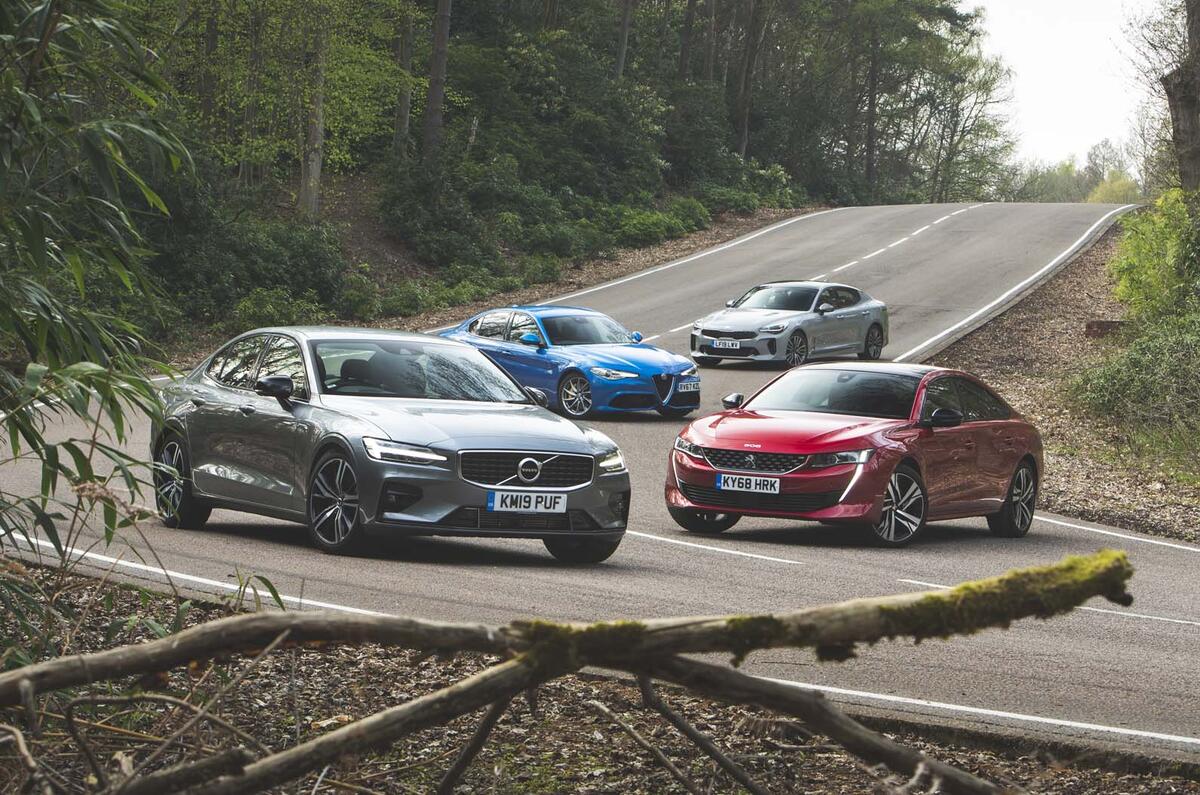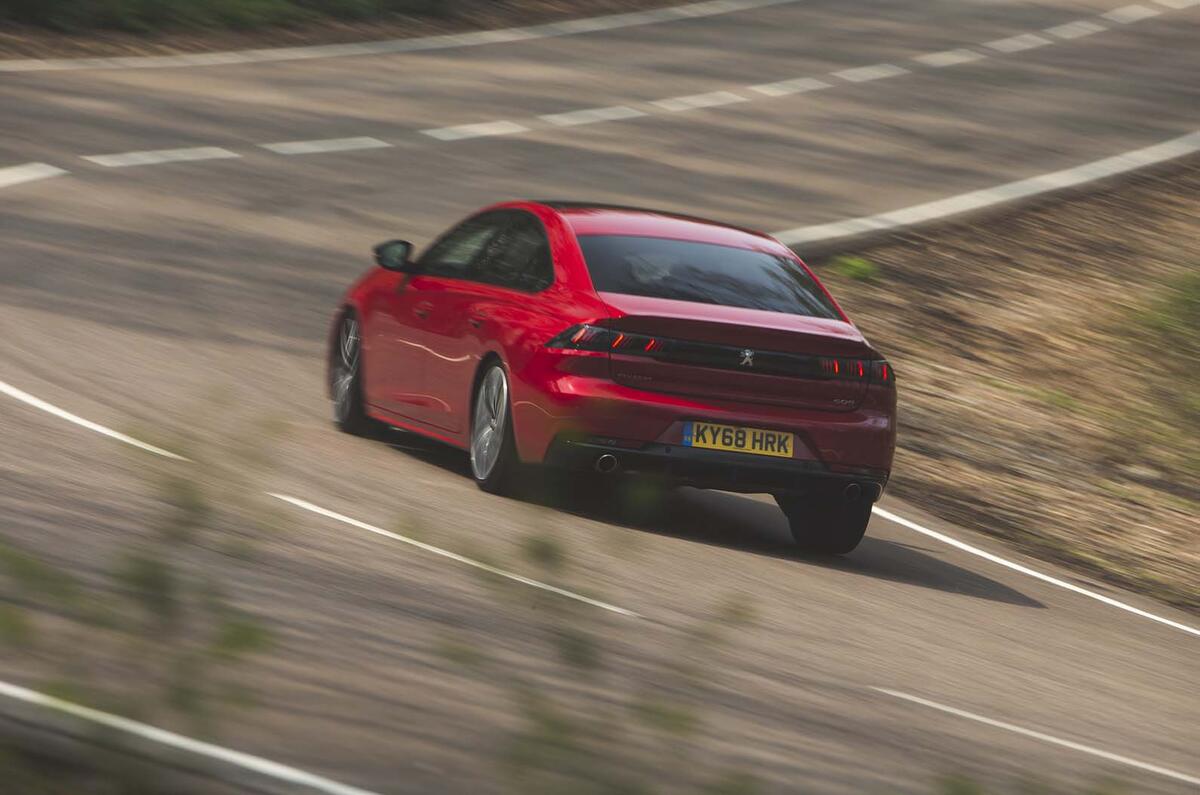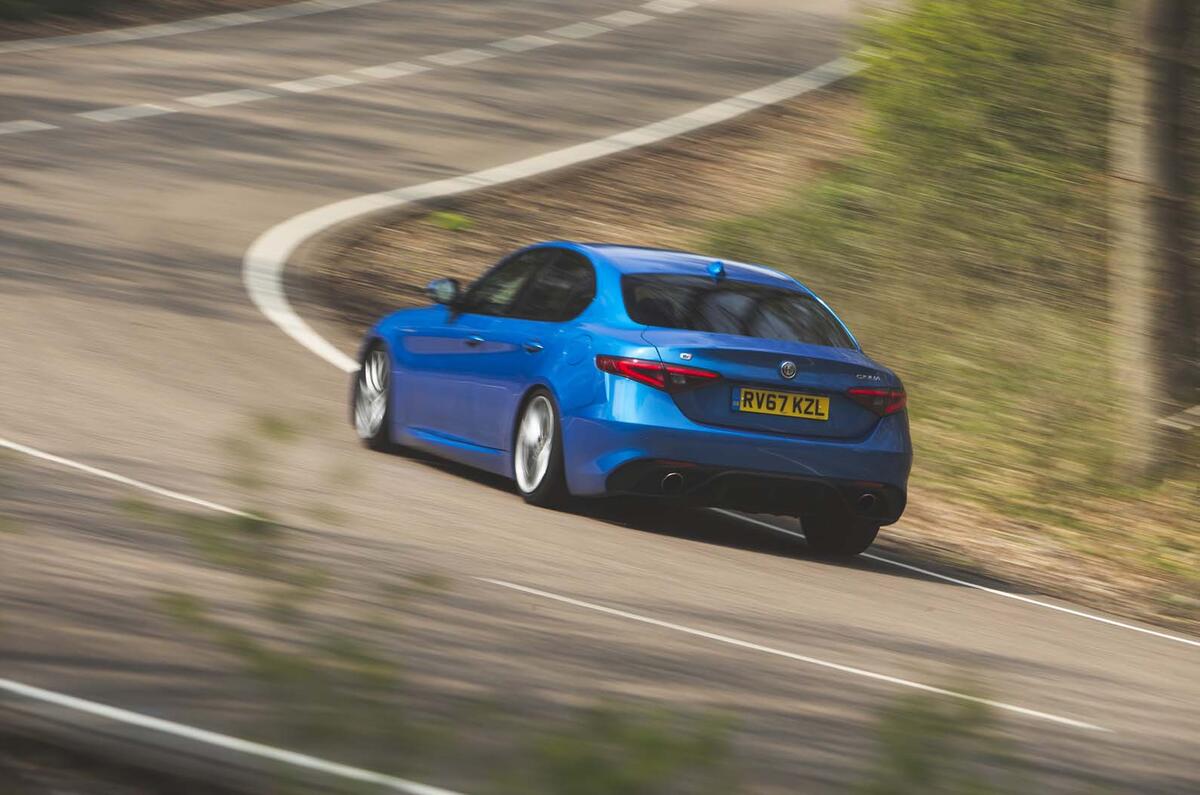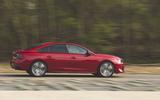This is a test for and of the unconventional. It’s for those who want something out of the ordinary. Something not an Audi, BMW or Mercedes-Benz. It is for those who think like a fleet manager does not.
There’s a new Volvo S60, see. Pretty, isn’t it? We could have put it against its prime German saloon rivals, and if we did, my guess is that it would finish second to the new 3 Series, because the BMW has a kind of poise that the Volvo does not. But to avoid that foregone conclusion, and because we wanted to do something more esoteric, we have assembled three rivals that all go about being large family saloons/hatchbacks in a slightly different way.

Which of our four is the most unusual is hard to call. Probably it’s the Kia Stinger. Not very long ago the idea of an executive Volvo being pitched against a Kia of the same class and price – the high £30,000s, like all the cars here – would have been unthinkable, but now, here we are. The rear-drive Stinger is a car I don’t think you’ll see many of, but it will change public perception.
The Stinger was developed, it seems obligatory to say, under the leadership of an engineer who used to head BMW’s M division, and it’s a car we like very much. Most of all we like it with a big V6 and a limited-slip differential, because we’re children, but, like the S60, this one comes with a 2.0-litre petrol engine. I told you this was a different sort of test.

That means the 242bhp Kia does without the unslippery differential but still drives its back wheels through an eight-speed automatic gearbox, as does competitor number three, the Alfa Romeo Giulia, here in 276bhp Veloce form. I have a lot of time for the Giulia.
I’ve driven it mostly in Quadrifoglio spec, in which it feels more like a sports car than a sports saloon, which is testament to the people who made it. At this point it’s also obligatory to say the engineer who led the project had a hand in the Ferrari 458 Speciale, which is still a high point for enthusiasts and engineers alike. This Alfa has a 2.0-litre petrol engine, so it’ll be interesting to see what it’s like given that in this form the car is as light as it can be.

Then there’s the car from a maker which is undergoing something of a resurgence, both from a style and a dynamic perspective: the Peugeot 508, a model that, last time around, was pretty ordinary. This time it’ll be different, says Peugeot’s MD. He doesn’t care if fleets don’t buy 508s, he says. In fact, he’d rather they didn’t, because it ruins residual values. So when you go to Hertz or Avis you shouldn’t end up in a 508, unless something has gone wrong with Peugeot’s plan.
Peugeot’s sales in China, a market which likes a big saloon, have gone wrong. They’ve bombed, alongside those of several non-domestic car makers. A shame, because the new 508 is the kind of big family car Peugeot used to make, back when the 405 and 406 challenged the best in class for ride and handling, looked stylish and, for the time, had fairly presentable interiors.

That’s the bit we’ll come to first, then. In olden times the big Peugeot was a normal family car but these days the lines between classes are rather more blurred, by premium cars and SUVs muscling into the territory. So now everybody needs a swish interior, which, in Peugeot terms, means an i-cockpit: a very small steering wheel and an instrument binnacle sitting behind it, partly obscured. Peugeot says it has sold five million cars with the i-cockpit so it’s successful, but just because people have paid money for something, doesn’t mean they necessarily like it or that it’s any good.
I still struggle with it. It’s not that the seating position is bad – it’s quite normal enough – but the small steering wheel is low-set like a dodgem’s – which is fun enough for a few minutes at the fairground but doesn’t do a lot for me over several hours, let alone 10,000 miles a year.

Perceived material quality is good, although the infotainment touchscreen is fiddly. The upcoming 208 seems to move the concept on yet again, so maybe the whole thing is like BMW’s i-Drive, which needed several iterations before it became brilliant. Just a shame about the ones in the interim if it does.
The other three cars here mix touchscreens (Volvo, clear and quick, bold and logical, but still too distracting), a control knob (the Alfa, which has fewer features and poor graphics but is easy to navigate), or a combination of touchscreen and turnable, pushable knob (the Kia, which also does all you’ll need to and is simple enough to navigate around). If you were stationary the Volvo would prove the easiest to use, so responsive and understandable is it, but 70mph on the M1 isn’t stationary, so the Kia pips it.

The rest of the respective interiors? If the last Alfa Romeo you sat in was anything up to a Mito you’ll be surprised at how great the Giulia’s driving position is, with supportive seats, a steering wheel with bags of reach on it and big flappy gearshift paddles that remain attached to the steering column, as they do in a Ferrari, so they’re always where you left them. I like that.
There’s some leather and stitching to lift the ambience, and in its layout the Giulia feels quite driver-orientated. There are more brittle, scratchy plastics, though, and the metallic plastics are very obviously plastic doing a terrible impression of metal. I think they’d have been better off kept looking more honest.

That’s not an issue that exists in the S60, whose maker is a company producing cabins of the highest order. Sure, there’s an argument that they’re all the same, but that applies to all premium car makers. There are, at least, minor differences in ethos between an S60 and, say, the Volvo Volvo XC40 SUV, which has a more colourful, playful interior, while the S60 is more laid back. The commonality is good-looking real or fake metal and soft plastics, plus big seats. Too much touchscreen aside, it’s uncluttered and slick and feels more like the inside of a home than a hi-fi. And there’s a lot to be said for that.
Kia is still trying to absolutely nail premium feel. Still not entirely succeeding, but it’s far from failing. The Stinger’s perceived quality is lower than the Volvo’s, but there are nice soft touches, and metal, where applied in thin measure, looks good.

The Kia is the roomiest. You’ll find good space in the rear cabins of them all, but the hatchbacks of the Kia and the 508 give them an advantage over the S60 and the Alfa. The Giulia, the smallest car here, has the least spacious rear seats and boot. Maybe their size differences will tell them apart on the road. Let’s see.
The S60 sits on Volvo’s big-car architecture, and while this particular model looks aggressive from the outside, that is not how it drives. As you probably know, Volvos are soon going to end up limited to 112mph. This, then, is not a company overtly interested in dynamics or lap times. And that’s fine.

It’s a bit of a surprise, though, to find that Volvo hasn’t seemed inclined, at least with this version of the S60, which comes on wheels that are 1in bigger than standard, to give the car a great low-speed ride.
I wonder if we – and not just this magazine – have cut Volvo a bit of slack because of how lovely its interiors are. Because dynamically the S60 falls some way short of class-leading. On a motorway the S60 is laid back, and that’s fine, and I suppose it’s where you’d spend a lot of time, but it wouldn’t hurt to finesse the lower-speed ride too.
Likewise the cornering, where there’s a reasonable amount of lean but not a great deal to enjoy – except that the S60 is lower and more composed than a comparable SUV, and there’s something to be said for that alone. But it’s neither outright squishy nor outright dynamic, and the engine lets you know if you’re working it, so the only brief the Volvo totally fills is that of long-distance, little-throttle, straight-line companion. I’d like more than that.

Closest to it for high-speed comfort is the Stinger, but there’s rather more to the Kia than cruising stability. Although it’s a large car – the only one here at more than 4.8m long to the Alfa’s 4.64m and the others in the 4.7s – by dint of its driven rear wheels, and through the willingness of its engineers to make it entertaining, the Stinger feels like a GT car of sorts.
Not only does it match the Volvo for high-speed comfort, but it also rides better at low speeds and steers engagingly, with genuine mid-corner poise and balance. Would it be excessive flattery to say it feels a bit like a 2.0-litre Aston Aston Martin DB11? Even if you squinted a bit, yes, it probably would be. But you get what I mean.
The Kia’s engine revs strongly and drives through its automatic ’box smoothly, but if you flip the paddles to change gears yourself, it reverts to auto too quickly. Shame. There’s a lot else to like here: slick steering, good body control and a really pleasing mid-corner balance among them.

Reasons for picking the Peugeot, dynamically, are harder to fathom. I like the 508 and against normal rivals it would fare rather well, but it feels a bit ordinary. The ride is pliant, noise levels are low if higher than the Kia’s, and it actually turns quite willingly. But all the while it’s giving precisely nothing back for your trouble. The steering feels the same weight all the time, so the dynamism comes from the response through the small steering wheel and a quick rack. I’d like a bit more than that from a car that tells me it’s interested in me, not my fleet manager.
Still, although it’s down on power here with just 222bhp, it doesn’t feel slow in this company. The Peugeot’s 1.6-litre turbo engine has less lowdown oomph and response than any of the 2.0s, but it doesn’t mind spinning and the gearbox reaction is slick. Not that outright speed matters. None of these cars, whether taking five (Alfa), six (Kia, Volvo) or seven (Peugeot) seconds to get to 60mph, feels unresponsive.
Which leaves the Alfa. If the V6-powered Giulia Quadrifoglio feels like a sports car, enough of its magic makes its way into this version so that it definitely feels like a sports saloon. Its 2.0-litre engine is the most potent here and it sounds good, and that this is the lightest Giulia, and is rear-driven, means there’s balance and agility to spare. The steering is terrific and it even rides well, albeit more noisily at speed than the rest.

It’s the best car to drive here, no question. In fact, point it and a BMW 3 Series down the same stretch of road and I think you’d come away having enjoyed the Giulia more.
Which leaves us where? I like the Peugeot but it’s the easiest to dismiss, because there are too few reasons for it to stand out. The others all have a certain something: the Kia’s spaciousness and GT-like qualities are endearing; the Volvo’s interior is a class above them all.
But when you’re 90 and you give up driving, you’re not going to look back wistfully on the car you owned with the nicest dashboard top or speaker grilles. You’re going to remember a car for its excitement and how it made you feel. Buy the Alfa.

Past iconoclasts

Alfa Romeo 159: The 159, the Giulia’s predecessor, looms large in the pantheon of sexy Alfa saloons. Family men the world over wept with joy when it was launched, for here was a practical exec which exuded style from every panel and was even quite good to drive.

Jaguar XE: Everyone loves a Jag, and when it’s as compact and as good looking as the XE was when it arrived, you can see why. Drive one and you’ll come away impressed: it steers and handles like a Jag should; sit in the back and you might not like it so much…

Honda Accord Type R: Years ago the boggo Accord was worthy and clever but incredibly dull, until Honda put its 2.2 VTEC screamer into it and fitted a quick steering rack, uprated suspension and fancy white wheels, after which we couldn’t praise it enough.

Ford Mondeo ST220: Any thoughts about the capacious Mondeo being no more than a mobile trouser press were dispelled by this ST version, which made 223bhp from its 3.0 V6 and dispatched the 0-60mph sprint in just 6.6sec. A thirsty car but great fun.

Volvo S60: We’d got used to sober-sided and square Volvos, so when this sleek S60 arrived in 2001 – echoing the lines of its larger S80 sibling – we rejoiced. Volvo took the ball and ran with it, and now its range of impressively athletic cars is blessed with a subtle beauty.
This article was originally published on 15 June 2019. We're revisiting some of Autocar's most popular features to provide engaging content in these challenging times.
Read more
Driving the Peugeot 508 on France's route nationale 508​
Saloon showdown: 2019 Tesla Model 3 vs new BMW 3 Series​






















































Join the debate
Add your comment
Surprised the Mondea and
Surprised the Mondea and Insignia weren't included as they're more direct competitors for the Peugeot than say an Alfa or Stinger?
Buy the Alfa?
And remember the car for the excitement you felt when it went into the garage (yet again)?
teemacs wrote:
My Giulia has been perfectly reliable.
Buy the Alfa and be done with